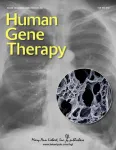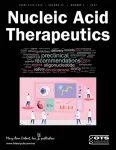(Press-News.org) The world’s forests are losing their ability to absorb carbon due to increasingly ‘unstable’ conditions caused by humans, a landmark study has found.
Dramatic changes to forests, and other habitats that store carbon in plants and soils, are becoming more likely in some regions across Earth, with less carbon consistently absorbed by the ‘land carbon sink’ provided by trees, soil and plants, according to scientists writing in Nature.
The short-term impacts of rising temperatures, deforestation and farming on many vulnerable landscapes means carbon stores on land are less likely to recover in the longer term, the scientists say. This reduces the overall storage capacity of the land to absorb carbon and undermines global efforts to curb or reduce levels of greenhouse gases in the atmosphere.
Dr Patrick McGuire, a climate scientist working jointly in the Department of Meteorology and the National Centre for Atmospheric Science branch, both at the University of Reading, UK, was a co-author of the new study, which was led by colleagues at CREAF, Barcelona, and Antwerp University.
Dr McGuire said: “We found that large regions of the world are vulnerable to sudden and dramatic changes to their landscape, because the ability of their ecosystems to absorb carbon starts to destabilise.
“For example, forest fires in California are more likely because of extremely dry and hot conditions caused by a hotter atmosphere. More fires means forest turns to scrubland, sometimes permanently. This reduces the land’s overall ability to suck carbon out of the atmosphere as it did before.
“This creates a vicious cycle as areas such as these become more vulnerable to the effects of climate change in the future.”
Unstable carbon storage
Researchers found that from 1981-2018, ecosystems across the world moved through different phases, ranging from high productivity, when plants were able to take in more carbon, to low productivity, when plants were less able to absorb carbon.
The scale of these fluctuations creates a greater risk of destabilisation, increasing the risk of abrupt landscape changes as ecosystems cannot acclimate to climate change, deforestation, and changes to biodiversity, among other factors.
The study, published today (Wednesday, 22 February 2023) in Nature, found the regions most at risk typically have less forest cover and more cropland, are warmer, and have experienced greater rises in temperature, which could be related to an increase in extreme weather events, such as heatwaves and cold snaps. The areas identified as most at risk include the Mediterranean Basin, Southeast Asia and the west coasts of North and Central America.
The researchers said these vulnerable areas have developed a ‘memory’ – described as a ‘temporal autocorrelation’ – meaning that years where carbon uptake is lower are more likely to be followed by years where carbon uptake diminishes further. Researchers say that as less carbon is absorbed in areas where forestland dominates, the likelihood of scrubland becoming the permanent landscape increases and forests could be lost forever.
Global variation
While several regions are at risk of abrupt changes in their landscapes, there are parts of the world where carbon absorption levels are consistent and ecosystem collapse is less likely as a result of carbon fluctuations. This includes the tropical forests of the Amazon, and parts of central and northern Europe, where carbon absorption capacity has increased. However, the researchers warn that regions such as the Amazon face other climate threats, such as future shifts in regular patterns of rainfall.
The scientists say these global variations could make it harder to predict the global impact of schemes to absorb carbon, such as planting trees, in helping the world reach carbon net zero.
Dr McGuire said: “Ecosystems on land currently absorb almost one-third of the carbon emissions created by humans. If they start to absorb less carbon, the earth’s natural ability to curb climate change diminishes. This means we may need to cut man-made carbon emissions even faster than we had previously thought.”
END
Dust is a common fact of life, and it's more than just a daily nuisance – it can get into machinery and equipment, causing loss of efficiency or breakdowns.
Researchers at The University of Texas at Austin partnered with North Carolina-based company Smart Material Solutions Inc. to develop a new method to keep dust from sticking to surfaces. The result is the ability to make many types of materials dust resistant, from spacecraft to solar panels to household windows.
The research is published in ACS Applied Materials & Interfaces.
"What we've ...
Key takeaways
Heart transplants offered to more patients with serious disease: A study of 323 pediatric heart transplants over 36 years at the University of Florida found that in recent years, more infants with serious congenital heart disease were offered heart transplants, but they had improved outcomes compared to patients in previous decades.
Improved long-term survival: Despite extending the procedure to younger patients with more serious heart problems, 5-year survival improved from 70.7% in previous years to 83% in recent ...
A new study from a University of Chicago scientist suggests there may be a layer of surprisingly fluid rock ringing the Earth, at the very bottom of the upper mantle.
The finding was made by measuring the lingering movement registered by GPS sensors on islands in the wake of a deep earthquake in the Pacific Ocean near Fiji. Published Feb. 22 in Nature, the study demonstrates a new method to measure the fluidity of the Earth’s mantle.
“Even though the mantle makes up the largest part of Earth, there’s ...
New research from North Carolina State University sheds light on how electric fields can be used to alter the thermal properties of ferroelectric materials, allowing engineers to manipulate the flow of heat through the materials. Ferroelectric materials are used in a wide variety of applications, from ultrasound devices to memory storage technologies.
“Our work here is a significant advance because we worked with large sample sizes and provide detailed information on the relationship between the type of electric field being applied to the ferroelectric material and the thermal response in the material,” says Jun Liu, an associate professor of mechanical and aerospace ...
Researchers report on the safety of a gene therapy to treat the common autosomal recessive hereditary disorder alpha 1-antitrypsin (AAT) deficiency in a new article in the peer-reviewed journal Human Gene Therapy. Click here to read the article now.
In ATT deficiency, neutrophil proteases destroy the lung parenchyma, the portion of the lungs involved in gas exchange. The result is a high risk for the early onset of emphysema. Ronald Crystal, MD, from Weill Cornell Medicine, and coauthors, have developed an adeno-associated virus (AAV) serotype 8-based gene ...
(Boston)—Immigration status, immigration vulnerability and understanding of immigration-related legal options are critical components of safety, access to public benefits and wellness for many immigrants/migrants. While immigration status is increasingly recognized as an independent social determinant of health, understanding best practices for health care systems that might mitigate the health disparities that result from unequal health care access dictated by immigration status is just beginning to be studied.
In an effort to better understand best practices, researchers from Boston University ...
A new report, coauthored by several major pharmaceutical companies, reviews the current state of sterile oligonucleotide drug product processing. The article, which provides recommendations to aid in the evaluation and development of terminal sterilization processes, is published in the peer-reviewed journal Nucleic Acid Therapeutics. Click here to read the article.
All marketed oligonucleotide products are delivered as sterile preparations for parenteral delivery. The two most common methods for sterilizing parenteral ...
COLUMBUS, Ohio – Nuclear physicists have found a way to peer inside the deepest recesses of atomic nuclei, according to a new study.
The finding was made possible using the Relativistic Heavy Ion Collider (RHIC) at the Brookhaven National Laboratory in New York, which is capable of colliding gold ions at near light-speed. It led to the discovery of a new kind of quantum entanglement.
The term quantum entanglement describes an invisible link that connects distant objects; no matter how far away they are in space, they affect each ...
Why is "junk DNA" not deleted from the original genome over millions of years of evolution?
A new model offers an explanation for the huge variety of sizes of DNA in nature
Unlike "junk email" that is immediately deleted from the email box, "junk DNA" continues to exist in living creatures in nature such as bacteria, insects, and even mammals such as humans, alongside the original genome and thus the genome grows throughout evolution.
The researchers' explanation: the "junk DNA" hides in functional areas, thus deletions are likely to damage the functional ...
San Antonio – Feb. 22, 2023 – Southwest Research Institute and ITS Texas are inviting college students and young professionals to participate in the inaugural Future Leaders Program at the 2023 ITS America Conference & Expo April 24-27 in Grapevine, Texas.
The new program is designed to inspire the next generation of leaders in the intelligent transportation systems (ITS) industry through a variety of activities at the ITS America Conference & Expo, which takes place this year at the Gaylord Texan Resort. Participants can attend education sessions and training and network with ITS professionals, exhibitors, sponsors and technology providers.
“The ...



